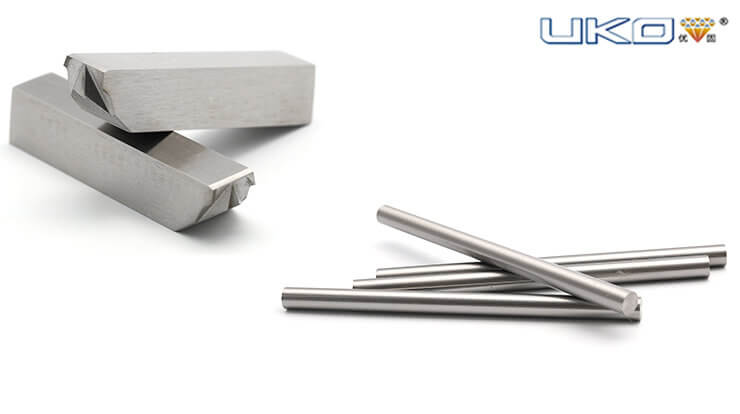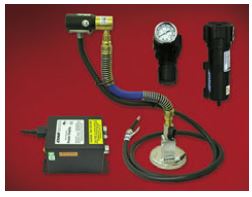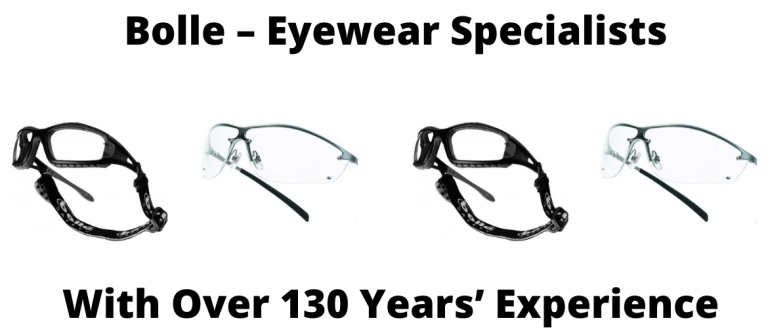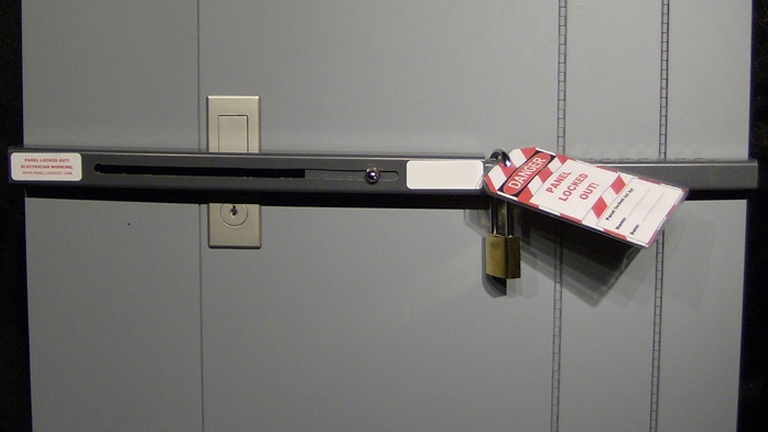How to Apply Vortex Tubes and Understand Cold Fractions
It’s been almost 100 years since Georges Ranque discovered the vortex tube phenomenon. Since then, they’ve become one of the best worst kept secrets in industry…I talk to callers all the time who have a piece of equipment that came with one of our Cabinet Cooler Systems installed, and they want to know how to get cold air like that for a machine tool cutting or spot cooling application. Other callers have discovered Vortex Tubes for the first time via a web search, or they saw one at a customer’s (or vendor’s) facility. They often sound like someone asking a magician to reveal the secret behind a trick. Of course, it’s not magic (not really) – but it is certainly a neat trick:
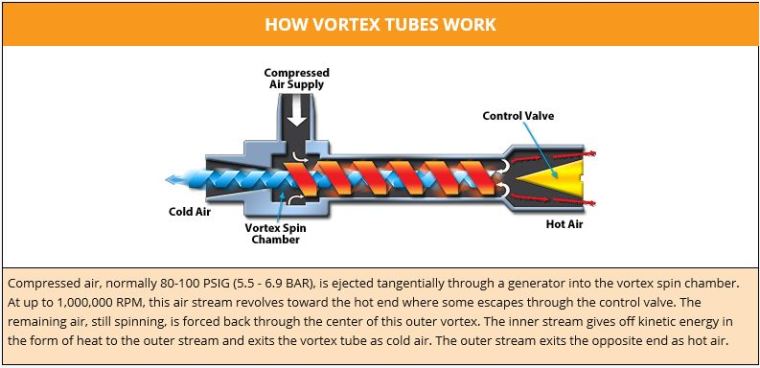
Then, the discussion turns to product selection. EXAIR Vortex Tubes come in three sizes, with multiple Models in each size range. Those different Models are all the same Small, Medium, or Large Vortex Tube, with a different Generator installed, which determines the amount of compressed air the Vortex Tube will consume…and the Cold Fraction range. These two variables go hand in hand when determining which Vortex Tube is right for the application.
‘Cold Fraction’ is the term for the percentage of the supply air that’s directed to the cold end. The higher the Cold Fraction, the higher the flow, and the temperature, of the cold air flow. Conversely, the lower the Cold Fraction, the lower the cold air flow…and temperature.
For jobs that call for rapid cooling to ambient temperature (or a little below), a “Max Refrigeration” Generator is installed in a 3200 Series Vortex Tube. They are designed to direct most of the compressed air flow to the cold end, exhausting a smaller amount out of the hot end. A Vortex Tube set at an 80% Cold Fraction is generally very close to being optimized for these applications: they’re putting out a decent amount of air flow, with a 54F temperature drop. Assuming the compressed air supply is roughly room temperature, that means you’re blowing 20 to 30F (-6.6 to -1.1C) air onto your part. Most of the time, it’ll cool it down in a real hurry. The final piece of the puzzle, then, is determining the cold air flow rate. Our lowest capacity Small Vortex Tube with a Max Refrigeration Generator will use 2 SCFM @100psig, and generates a flow of 1.6 SCFM of cold air. On the other end of the spectrum, our highest capacity Large Vortex Tube uses 150 SCFM @100psig, and gives you a cold flow of 120 SCFM. There are ten Models in between, so we can come quite close to an optimal selection for just about any size/shape of part that needs cooled.
Keep in mind that there are two variables in a convection/conduction air cooling application: the flow rate of the air, and the difference in temperature in the cooling air and the hot part. We’ll always recommend starting at the highest cold fraction, but you may find that a little bit lower flow…and the lower temperature that comes with it…might suit your needs better. Good news is, that doesn’t change the compressed air consumption, so you can optimize performance at no additional cost of operation.
Other applications call for air that’s just as cold as possible. For those, we offer our 3400 Series “Max Cold Temperature” Vortex Tubes. Where the 3200 Series’ Cold Fractions are adjustable from 50-80%, the 3400 Series can be adjusted from 20-50%. Assuming, again, that the compressed air supply is roughly room temperature, at a 20% Cold Fraction and 100psig supply pressure, your cold flow can be as low as -50F (-45.6C). If you’re trying to get something to a particularly low temperature – lab samples or circuits that need to be tested at a certain temperature, or freeze seals in piping systems, for instance – then a 3400 Series Vortex Tube is just what you’re looking for. These come in the same sizes & Models as the 3200 Series, from 2 to 150 SCFM.
Another nice thing about using a Vortex Tube for cold air is that you can turn them on and off as frequently (or as seldom) as needed. They’re generating cold air flow, at their published rated temperature, instantly. There are no moving parts to wear, so you can cycle them on and off rapidly, or let them run continuously. In fact, if you supply them with clean, moisture free air, they’ll run darn near indefinitely, maintenance free.
Here’s a short video, showing how to adjust the Cold Fraction of a Vortex Tube. If you’d like to find out more, give me a call.
Russ Bowman, CCASS

Application Engineer
EXAIR Corporation
Visit us on the Web
Follow me on Twitter
Like us on Facebook
